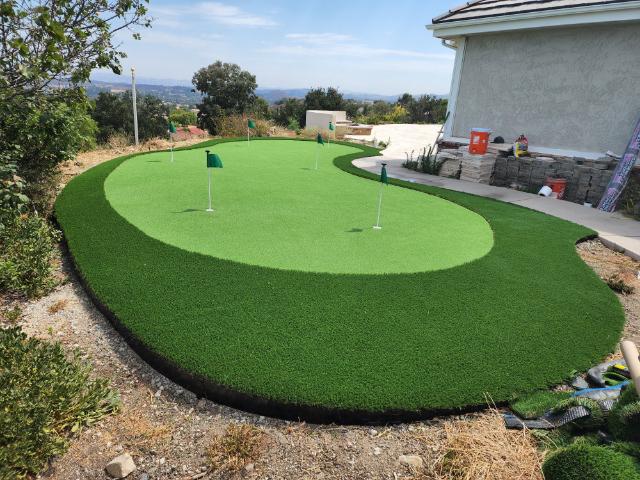Providing Discount Landscape
How Long Does Artificial Turf Last?

So, you’re thinking about swapping out your real lawn for that artificial grass everyone’s talking about? Not a bad idea—less hassle, more greenery. But before you take the plunge, let’s talk about how long this artificial green wonder is going to stay around and look real. Nothing fancy, just the facts.
Getting Acquainted with Synthetic Turf
Artificial turf offers a low-maintenance alternative to natural grass, but its durability is dependent on various factors that come into play during its lifecycle. Generally, artificial grass can last for as long as 8-10 years, but the factors mentioned below can change things.
UV Exposure:
Impact: Just like real grass, artificial turf’s synthetic fibers are exposed to sunlight. UV radiation exposure over an extended period can weaken, fade, or break down fibers.
Longevity Tip: Choose grass that has UV-resistant properties, especially in areas that receive strong sunlight. This will minimize the impact of sun exposure on its lifespan.
Quality of Materials:
Impact: Artificial turf is made up of various materials, including fibers, backing, and infill. The overall quality of these materials directly affects the durability and resilience of the turf.
Longevity Tip: Invest in high-quality artificial turf made from durable materials to ensure it can withstand wear and tear, preserving its integrity for a long time.
Infill Type and Amount:
Impact: Infill helps support the synthetic fibers and provide stability. The type and amount of infill used affect how well the turf stays in shape and resists compression.
Longevity Tip: Carefully select the appropriate type and quantity of infill to prevent matting and maintain the turf’s original structure over time.
Maintenance Practices:
Impact: Regular maintenance is important to maintaining the look of synthetic turf. Tasks such as debris removal, brushing the fibers, and fixing problems quickly contribute to its overall longevity.
Longevity Tip: Set up a regular care routine to prevent problems like matting, discoloration, or the growth of mold and mildew, ensuring your turf stays in top shape.
Climate and Weather Conditions:
Impact: Different weather conditions can affect artificial turf in different ways. Excessive heat, heavy rainfall, or freezing temperatures can pose challenges to its performance.
Longevity Tip: Choose artificial turf made to withstand the particular climate and weather conditions of your region, so it can thrive in various environmental circumstances.
Installation Quality:
Impact: The way artificial turf is installed plays a major part in its long-term performance. Proper drainage, an even surface, and secure edges contribute to the turf’s durability.
Longevity Tip: Ensure professional installation to avoid issues like uneven settling or inadequate drainage, which can harm the structural integrity of the turf.
Final Word
Understanding and proactively addressing the factors mentioned above can greatly improve the lifespan of your artificial turf, providing you with a vibrant and functional outdoor space for an extended duration. Whether you’re considering artificial turf for residential lawns, commercial spaces, or sports fields, considering these factors will help you make the most of your investment.
So, if you’re thinking about synthetic turf, make the switch, enjoy the green without the drama, and let that artificial grass work its magic for years to come.
